
Today our hero will be a processor that was not supposed to appear at all, but instead gained incredible popularity and changed the course of history. You, of course, have already read the title and understand that we will be talking about the representative of the P6 microarchitecture, the successor of the Pentium III - the mobile Intel Pentium M.
This is the final article from the series about the history of Intel Pentium processors, because despite the fact that Pentium 4 / D processors based on NetBurst technology were produced a little longer than Pentium M, it was on the basis of mobile processors that the next generations of Intel processors - Core and Core 2 - were designed.
How do you imagine a laptop? Lightweight, thin, cool and capable of working all day without recharging? In 2002, Intel convinced us that a laptop must be fast. And to be fast in 2002 meant to be Pentium 4. And if in desktop computers this approach worked, and no one paid attention to coolers weighing a kilogram and one and a half times the nominal power of power supplies, then carry an extra half kilogram, or even a kilogram, in a briefcase or backpack, few people liked it.
Portable Irons
Since 2001, Intel has been convincing its customers that the Pentium III has run out of steam. But the only option for subnotebooks in 2002 was the good old Mobile Pentium III-m "Tualatin". After all, Pentium 4-m emitted 35 W of heat, and besides Enhanced Intel SpeedStep, it had no other energy saving technologies as such - that is, even without load, it released about 5-10 W into the atmosphere! Moreover, it required a discrete video adapter - integrated chipsets from competitors appeared already in 2003, at the end of the life cycle of the mobile Northwood.
These were the ATi Radeon IGPs used in the IBM ThinkPad R40e, and the SiS M650, the king of cheap laptops, which became hugely popular in desktop Pentium 4 and Celeron devices. Intel at that time offered only Intel 845MP - the flagship chipset with support for DDR memory and AGP 4x for a discrete video card.

As a result, the gorgeous, no-discount ThinkPad T30 is 3mm thick and 300 grams in weight compared to its predecessor, the T23. And if the T23 did not experience problems with heat dissipation and noise even in the heat, then the T30 became prone to overheating and became noticeably audible even at low load. Battery life has been reduced by an hour, from 3.5 to 2.5 hours.
What to say about other, less scrupulously designed machines. The author had a chance to own a Dell Latitude C840 and move to a ThinkPad T30 precisely because of the exorbitant weight for daily use - a set with a power supply unit weighed about 4 kg.
The frequency of desktop processors, meanwhile, grew and grew, reaching 3 GHz by the end of 2002. Pentium 4-m barely managed to reach 2.6 GHz and remained on the 400 MHz bus - otherwise the thermal package would inevitably have grown even more. Intel partners howled - do not bury a whole segment of the market! And they probably howled even earlier, even after the first tests of the Pentium 4-m, otherwise Intel would not have had time to prepare a solution so quickly.
Child of Tualatin and Northwood
Meanwhile, work was in full swing at Intel's Israeli R&D center, which gave the world the MMX instruction set and the stillborn Timna . A new platform for thin and light notebooks was being prepared for release under the codename "Carmel" (this name was already used before - that was the name of the Intel 840 chipset). Taking into account the lessons learned from the Timna project, the developers decided to take the best elements from the existing Intel developments and spice up the necessary new energy saving technologies.
Their research resulted in Banias processors and Montara chipsets. And upon release, this entire kit was named Intel Centrino (platform), Pentium M (processor) and Intel 855PM / GM (chipset with discrete and integrated video systems, respectively).
The new products were officially presented in March 2003 and immediately received rave reviews from computer critics: new processors with a frequency of 1.3 to 1.6 GHz (later up to 1.7) competed on equal terms with desktop Pentium 4 with a frequency of 2.0 to 2.6 GHz, and only starting with 2.8 GHz, desktop systems took the lead.
Pentium 4 managed to regain its positions for a short while with the release of models with 800 MHz bus and dual-channel chipsets, but at the same time the Pentium M was developing. A unique situation has developed when top-end notebook models practically equaled the performance of desktops - at the same time fast 7200 rpm disks appeared. and video cards weren't that complicated and hot yet.
The most interesting thing, as usual, is inside. The processor core was made using a 130 nm process technology and consisted of 77 million transistors versus 55 million for the Pentium 4. The core area is 84 mm2, less than that of Northwood (131 or 146 mm2) - and this is within the same process technology! The core itself was fundamentally different from Northwood. In fact, it was a significantly updated Tualatin, a representative of the P6 architecture.
The most notable changes were the cache increased to 1 MB, which was then associated more with server Xeons, and the 400 MHz QPB (Quad Pumped Bus) bus, familiar from Pentium 4 processors. memory speed. The Israeli team did not dare to repeat the attempt to integrate the memory controller into the processor (the notorious Timna was the first attempt), but even without this, the processor received a significant performance boost.
The most remarkable thing is that energy consumption and, accordingly, heat dissipation only decreased. The processors themselves had a maximum power dissipation in the range of 21 to 25 W for the main line, and low-voltage versions were also released with a TDP of 7 W for the ULV series (900-1100 MHz) or 12 W for the LV series (1100-1300 MHz). But these are the maximum values - without load, the processors were able to significantly save battery power at low and partial load. EIST allowed the core frequency to be reduced to 600 MHz, instead of 1200 MHz in its predecessor, while further reducing the chip's supply voltage.
Deeper sleep modes, Deep Sleep (C3 ACPI mode) and Deeper Sleep (C4), are now available. Equally important, these same features were supported by the chipset and wireless adapter. For budget and even more efficient laptops, a version of the chipset was created with an integrated video adapter that also supports energy-saving functions, while not inferior in 2D graphics to discrete adapters and having tolerable 3D performance.

The chipsets were assigned to the top 850 line, although they functionally repeated the Intel 845E / G models - a single-channel memory controller, AGP 4x, ICH4 south bridge with USB 2.0 and IDE controllers. But all of this was so generously flavored with energy-saving technologies that it allowed to refer the chipsets to the new family.
Thanks to these innovations, the new notebooks are significantly cooler, have longer battery life, and are thinner. As an example, let's take the IBM ThinkPad T40p, a replacement for the T30. It became thinner by a centimeter (!) - 25.4 mm instead of 36.6 mm, began to work twice as long without recharging (with a standard battery), and problems with overheating and noise are a thing of the past.
Also, thanks to a successful (without sarcasm successful) marketing move by Intel, which advertised the Intel Centrino platform, and not its individual components, and included a Wi-Fi adapter, wireless networks began their triumphant march across the planet.
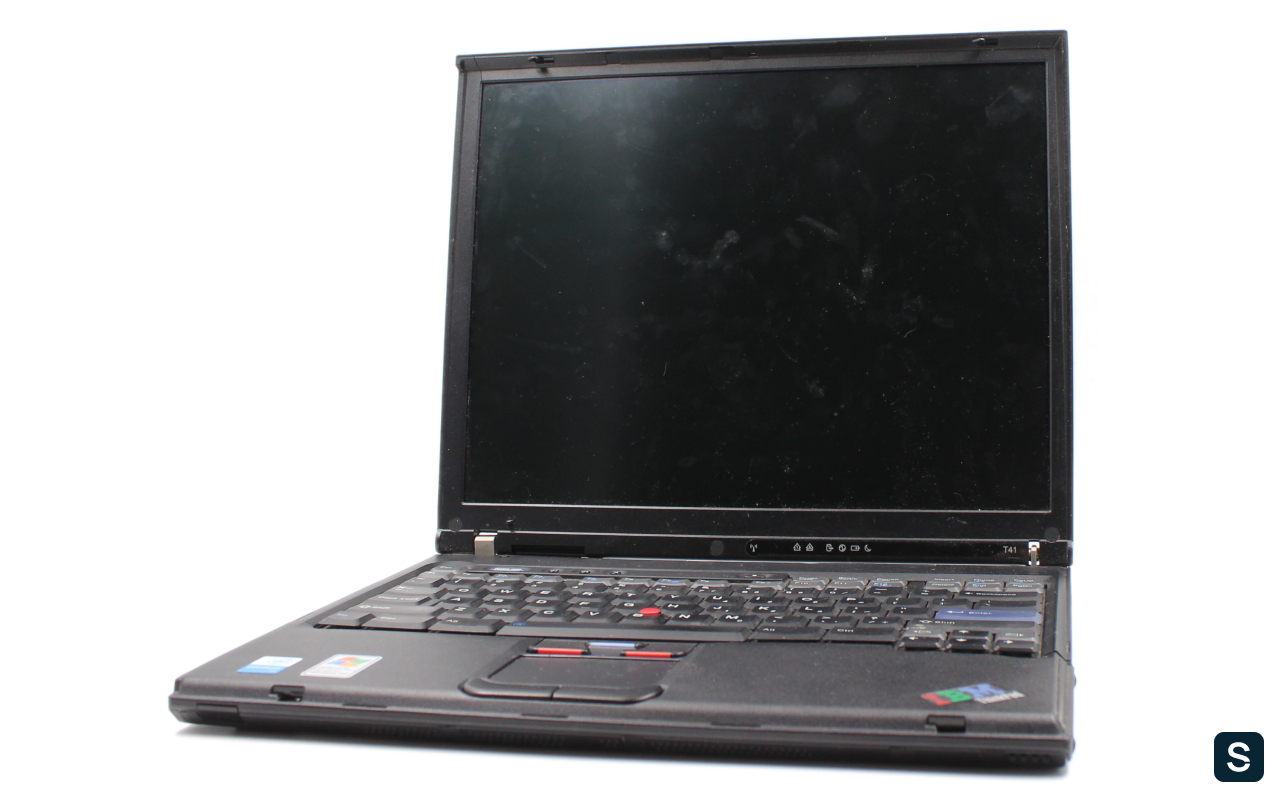
A typical representative of the first generation Pentium M is the IBM ThinkPad T41, a classic business-class model. A thin and light laptop with a powerful processor, top-end configurations were equipped with a high-resolution screen and a powerful video adapter. It is the design of the fortieth series (T40 - T43) that can be called the pinnacle of artistic thought of the employees of the IBM design studio in Yamato.
Digital Vintage instance configuration:
- 14 "screen with a resolution of 1024x768
- Pentium M 1.6 GHz processor
- 1 GB DDR266 RAM
- 40 GB hard drive (5400 rpm)
- ATi Mobility Radeon 7500 with 32 MB VRAM
- Intel Pro / Wireless Wi-Fi Adapter
- DVD / CD-RW drive
- OS / 2 Warp 4 MCP2 "Merlin"
More processors, good and different
According to a long-standing tradition, Intel itself first of all any Pentium acquired a Celeron on a similar core. By the same tradition, the first thing to suffer is the cache - in this case, it returned to the "toilet-Northwood" 512 KBytes. There was nowhere to cut the bus, 400 MHz is the youngest version of QPB. Surprisingly, the economy did not get much, even EIST was retained, but only in ULV models.
Celeron M ULV was not intended for ultra-budget notebooks, but for the mid-price segment - to reasonably reduce the cost of expensive or very slow (Transmeta Crusoe) subnouts at that time. Somewhat later, after the introduction of model numbers, versions with a standard supply voltage appeared - they lost support for some energy saving technologies, but still remained much colder than their counterparts on the Northwood core.
An interesting fact: of the full-fledged Banias, only Pentium M 705 (1.5 GHz) received a model number and continued to be produced after the next generation was released.At one time, Celeron 266 MHz received the nickname "Castrat" - to reduce the cost, it was completely deprived of the second-level cache. After much criticism, Intel added 128KB of full-speed cache to the new models, which saved the Celeron brand's reputation. But the idea, apparently, was not completely discarded. In 2004, there were references to the Shelton core, a version of Banias without an L2 cache.
Only one model went into production - Celeron 1.0B, which was produced in a BGA package for soldering and was supplied installed in an Intel D845GVSH motherboard, the first board in the Mini-ITX form factor not from VIA. These boards were sold in developing countries.
In the same 2004, the second generation Pentium M appeared - the Dothan core, which received as much as 2 MB of second-level cache and switched to the 90 nm process technology. The first level cache was also doubled. The number of transistors has increased to 140 million with a virtually unchanged core area of 83.6 mm2. The frequencies of the standard version of Dothan are from 1.5 to 2.1 GHz with a bus frequency of 400 MHz. The younger model was designated the number 715, the production of the 705 model continued with the same frequency.
No new chipsets were announced, except that not long before the release of new processors, Intel 855GME appeared, which received support for DDR333 instead of DDR266 and slightly increased video core frequencies. The discrete chipset depended on the memory bandwidth to a lesser extent (although they were all far from the full match of the bus and memory speed) and did not receive an update.
New platform

Now we are used to the fact that once a year new processors and chipsets appear for them, but this was not always the case. When Dothan appeared, it didn’t receive “its own” chipset - justice was done almost a year later. In mid-2004, desktop PCs received the revolutionary Intel 915/925 series chipsets with PCI-E support. At the beginning of 2005, the mobile platform received similar innovations.
Mobile chipsets of the 915 series, in addition to the new bus, have finally received a dual-channel memory controller and support for the Serial ATA interface. Both DDR and DDR2 memory were supported, but most laptops of this generation worked with the latter due to the lower supply voltage - 2.0 V instead of 2.5 V.
The new memory was also accompanied by a faster bus - 533 MHz. In fact, DDR2-533 would have been sufficient in a single-channel version, but notebooks with a video core integrated into the chipset, which required significantly more memory speed, became more and more common.
The Intel 915 series (actually 910/915) received many more variants than the 855:
- 915PM is the main variant, discrete chipset.
- 915GM - option with integrated video.
- 915GMS is a chipset for subnotebooks, similar in capabilities to 915GM, but the video core operates at lower frequencies. Supported only 400 MHz bus, produced in a more compact package.
- 915GME - 915GM variant with increased video core frequencies
- 910GML - variant for cheap laptops, bus only 400 MHz. Some sources mention support for single-channel memory only.
- 910GMLE - 910GML with 533 MHz bus support.
Most importantly, the chipsets inherited energy-saving technologies from the 855 series. Despite the slightly increased power consumption of Dothan (up to 27 W), notebooks on the new platform practically did not lose their autonomy. The new chipsets were accompanied by new Dothan models, the so-called Dothan Refresh - with a 533 MHz bus and frequencies up to 2.26 GHz. Even older versions of Prescott could fit such processors on both blades and were already very close to Pentium 4 Extreme Edition.
The ubiquitous Celerons soon followed. Thanks to the junior Celeron M ULV models, inexpensive and cold, new classes of devices have appeared - UMPC (Ultramobile PC) and MID (Mobile Internet Device), which are quite close to each other. They have been quite popular for a while, but they are not important, but their derivatives. On the one hand, there are netbooks, the first of which was the Asus EEE PC 701, whose wild popularity did not fade away for three years.
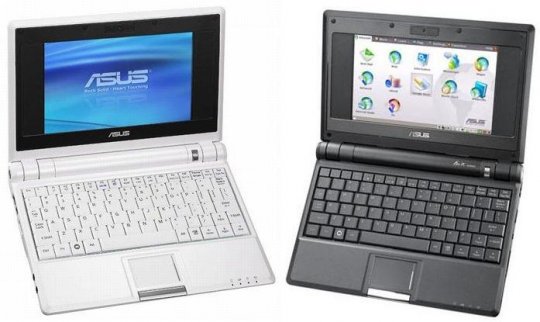
On the other hand, tablets were initially expensive, but became much more accessible after moving to the ARM architecture. In the pre-MID era, tablets weighed from 1.5 to 2.5 (!) Kg and were niche devices, professional tools. After - even 1 kg the tablet began to seem incredibly heavy. However, before the heyday of tablets, there were still two years left.
Laptops on third-party chipsets were encountered, but quite rarely - thanks to the promotion of the Centrino platform, and not separate processors, users tried to buy machines with the Centrino logo, and not just Pentium M. As a result, "non-platform" machines appeared either in the corporate segment (machines for the requirements customer with third-party Wi-Fi adapters), or in the budget and most often with Celeron M. The chipsets were inherited from the Pentium 4 - SiS M661FX and ATi RC420M, thanks to the use of the QPB bus, they turned out to be compatible.
In the Digital Vintage collection, the most noticeable second-generation Pentium M notebooks are two models - IBM ThinkPad T43 and Samsung Q1.

ThinkPad T43, , 15” . 42, -, . , 15” , IPS .
:
- 15” IPS 14001050
- Pentium M 760 (2.0 )
- 2 DDR2-533
- 40 IDE
- ATi Mobility Radeon X300 c 64
- Intel Pro/Wireless Wi-Fi
- DVD-RAM
- Windows XP Professional SP2
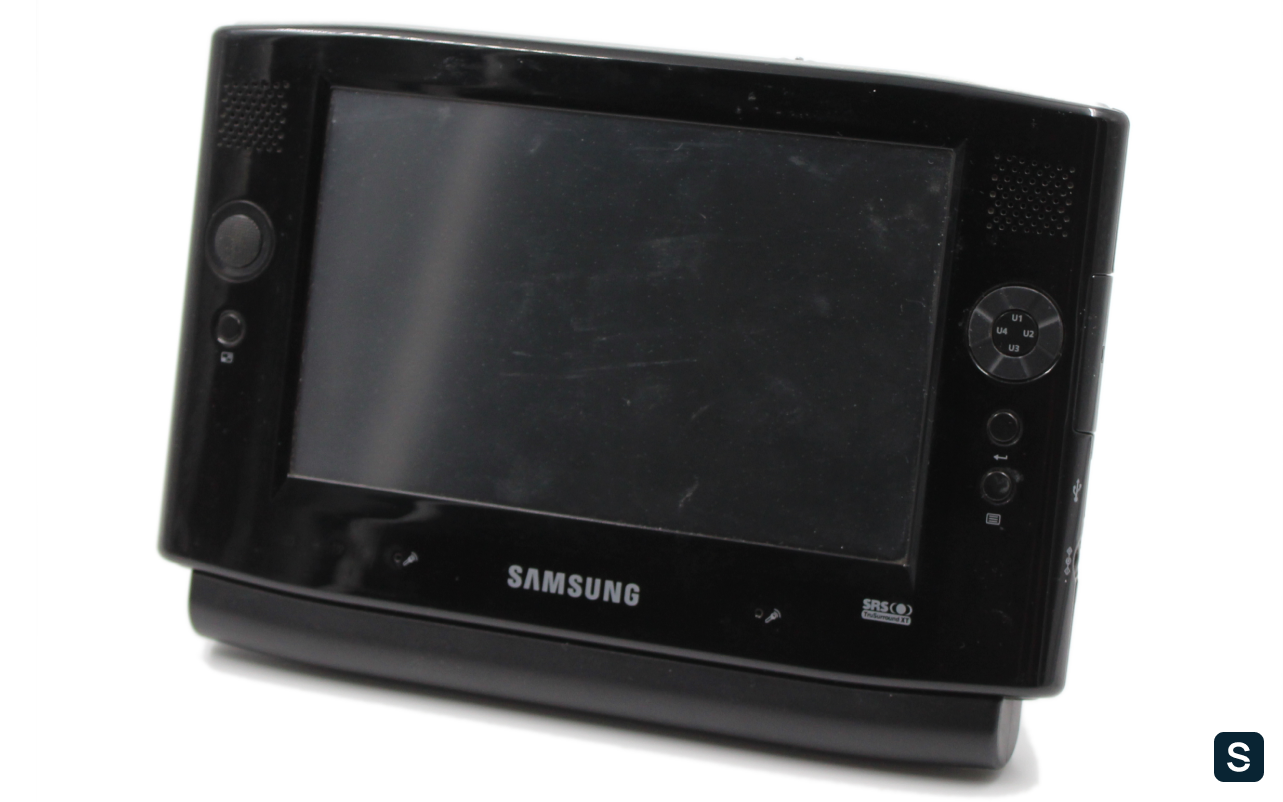
Samsung Q1 — MID . — . . — , . Q1 Windows XP Home Edition, , .
:
- 7” 800480
- Celeron M 353 (900 )
- 1 DDR2-400
- 40 1.8” IDE
- Intel GMA900
- Wi-Fi Bluetooth
- Windows XP Home Edition SP2
As it was already mentioned more than once, Pentium M competed on equal terms with desktop Pentium 4. Athlon XP remained the winner, and Athlon 64 did not win in all tests and did not go far ahead. But whatever one may say, a laptop is always a compromise. You can't put the most powerful video card in it, and at this time there was just some progress in the growth of video performance.
In a rare laptop, you can put two hard drives, not to mention the installation of high-speed server models or the same WD Raptor. In general, the expansion options are more modest than that of a desktop computer or workstation. Manufacturers matured for a long time, probably fearing Intel's wrath. And yet, three companies have taken this long-awaited and challenging step.
The first were AOpen and DFI - not so well-known now, but rather large manufacturers, primarily focused on the OEM component market. AOpen is known for its achievements in the field of overclocking video cards, some models had their own BIOS Setup with the ability to change frequencies, and unusual motherboards, for example, with a bright design (long before it became mainstream) or an audio section with a real tube amplifier.
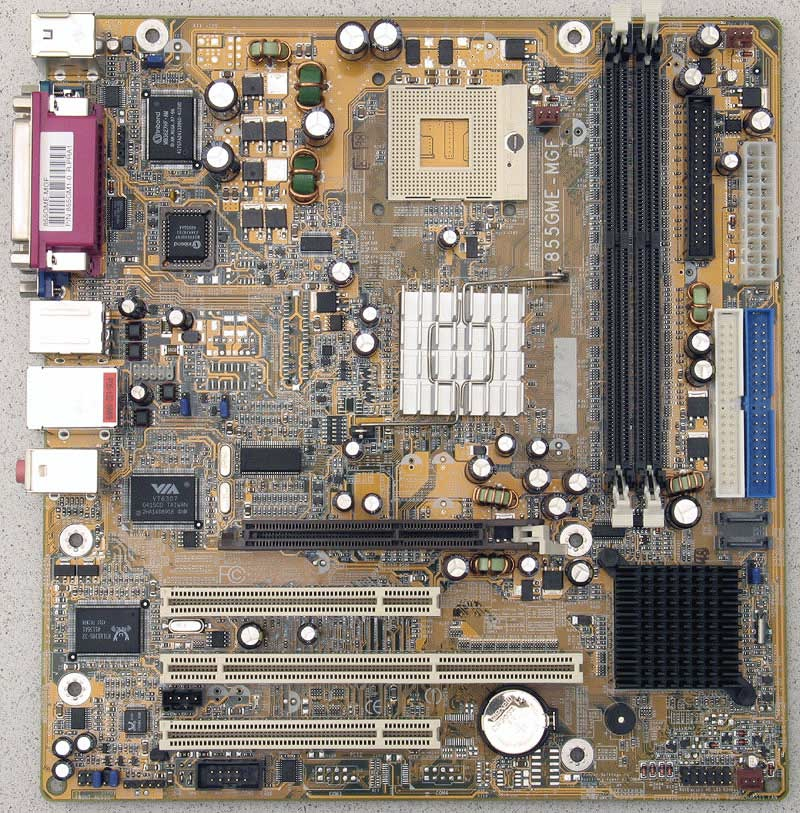
DFI gave the world the first boards for modders: the LANParty series with elements glowing in ultraviolet light. Both companies have released motherboards in mATX (9.6x9.6 ") format with two full-size DDR memory slots, 3 PCI slots and one AGP. The DFI 855GME-MGF board is equipped with an Intel 6300ESB server south bridge supporting SATA and PCI-64/66 MHz - one of the slots on the board complies with this standard. Onboard there is a gigabit network controller and a FireWire controller.
The AOpen i855GMEm-LFS from AOpen uses the usual ICH4 south bridge and carries two Gigabit LAN controllers, a separate SATA-RAID from Promise, and a FireWire controller. Both boards are based on the 855GME chipset with integrated video.
In retail versions, both boards look quite stylish - both are coated with black-brown lacquer, brightly colored slots are installed. But for OEM deliveries, the design was different, Aopen was produced in classic green, and DFI - in golden ocher.
The third company was the Taiwanese giant Asus (although this is more likely to be expected from their colleagues at ASRock). They released no less than a universal adapter Asus CT-479, which, when installed in one of the compatible motherboards, of course manufactured by Asus, allowed installing any Pentium M. The adapter was equipped with a special cooler installed on standard mounts. Through the use of conventional desktop models, the performance and functionality of the system were taken to an even higher level.

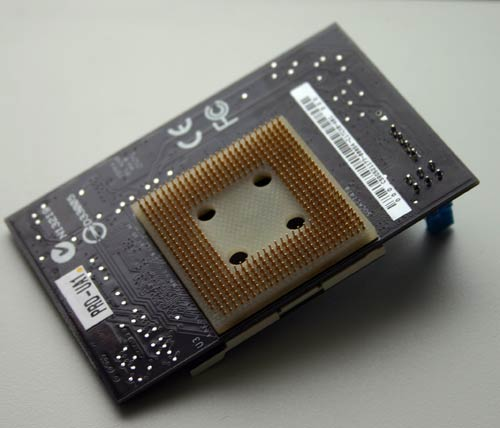
The compatibility list included boards based on dual-channel Intel 865G / PE, 875P and even 915P chipsets (two models released with Socket 478). All boards, except for the model with integrated video, corresponded to the ATX form factor and had very serious expansion options. The most interesting, of course, were the flagship P4C800-E and P4P800-E, as well as the P4GD1 - on the newest 915P. Many overclocking records are associated with these motherboards (after all, a chipset originally designed for 800 MHz cannot fail to achieve success with a 533 MHz processor) and performance in the standard mode.
Digital Vintage Pentium M. SERVERGHOST Constellation XM Mini AOpen Asus CT-479. .
Life goes on…
We don’t undertake to judge whether, thanks to the three rebels, Intel realized the futility of further development of Netburst or not, but the Pentium's time came to an end and the success of the Pentium M could not change this. In 2005, the last flagship desktop Pentium appeared - the dual-core Pentium D. A few months later, a mobile dual-core processor appeared, still 32-bit, based on the new generation of the same P6 microarchitecture, named Intel Core.
Since then, it is under this name that new flagships among Intel mobile and desktop processors have been released. The Pentium name was revived a year later, but now it is a budget line, a little higher than Celeron. And yet we will remember those real Pentiums with a kind word.
This concludes the series of articles on the history of Pentium processors. But this is not a reason to say goodbye - alternative platforms also deserve a story, we haven’t even looked into the days “before the Pentium,” let alone other architectures. And in the bins of Digital Vintage there are still many interesting exhibits that deserve a story about them.
Until next time!
